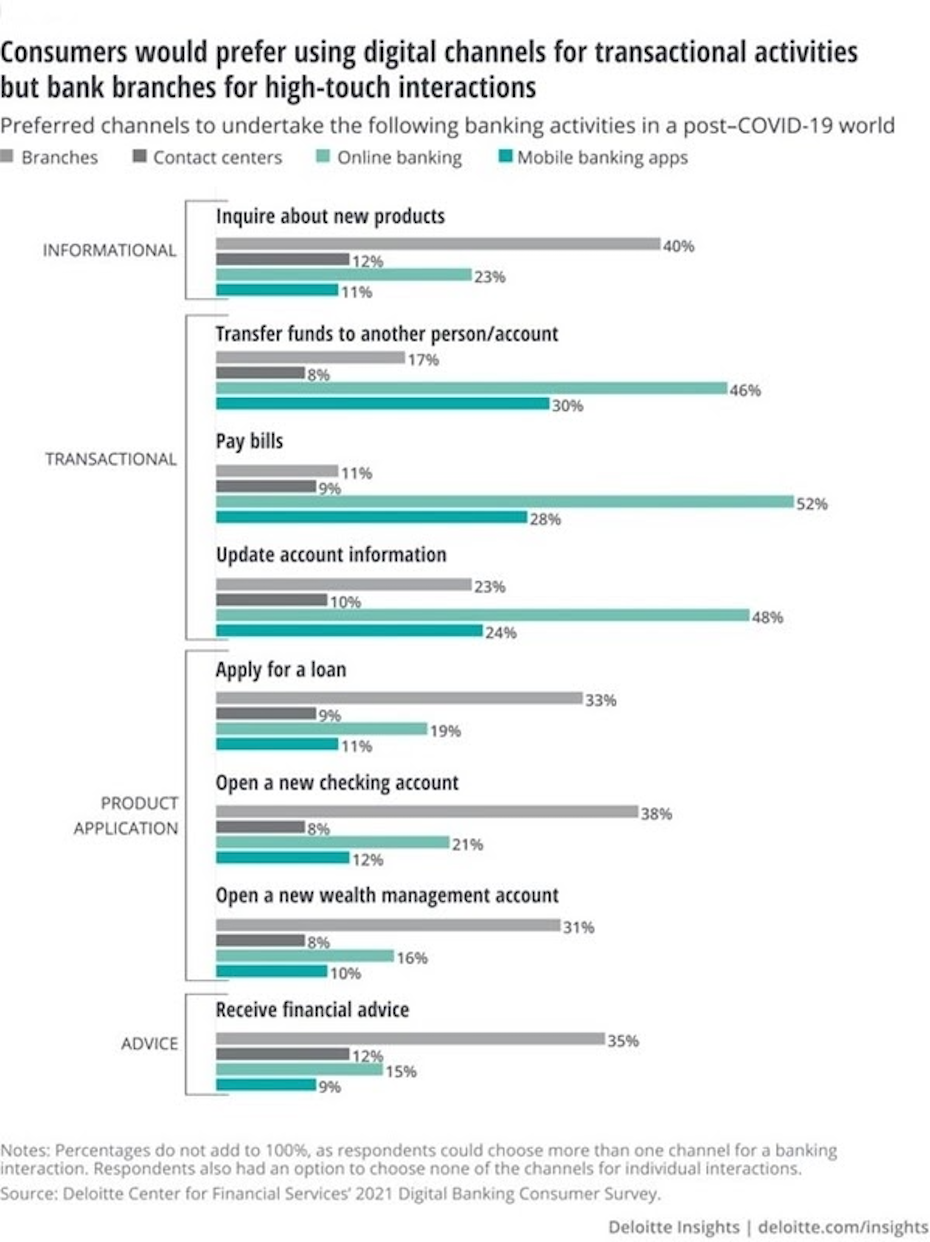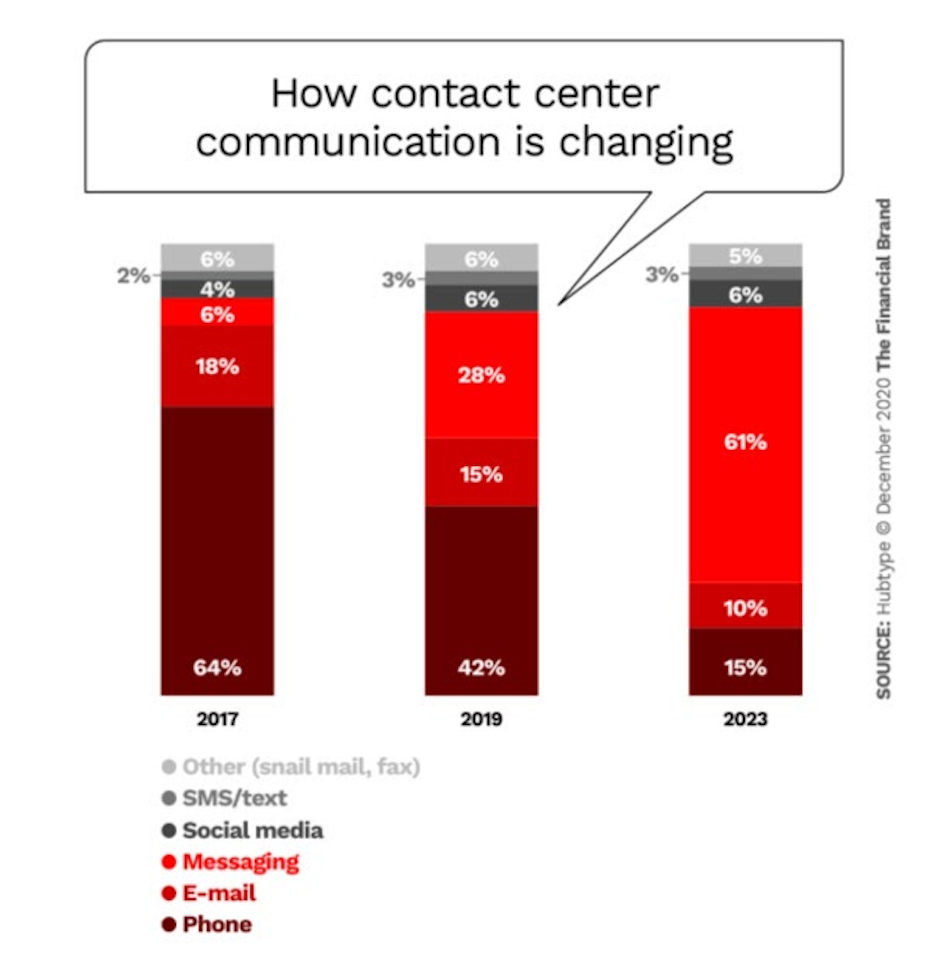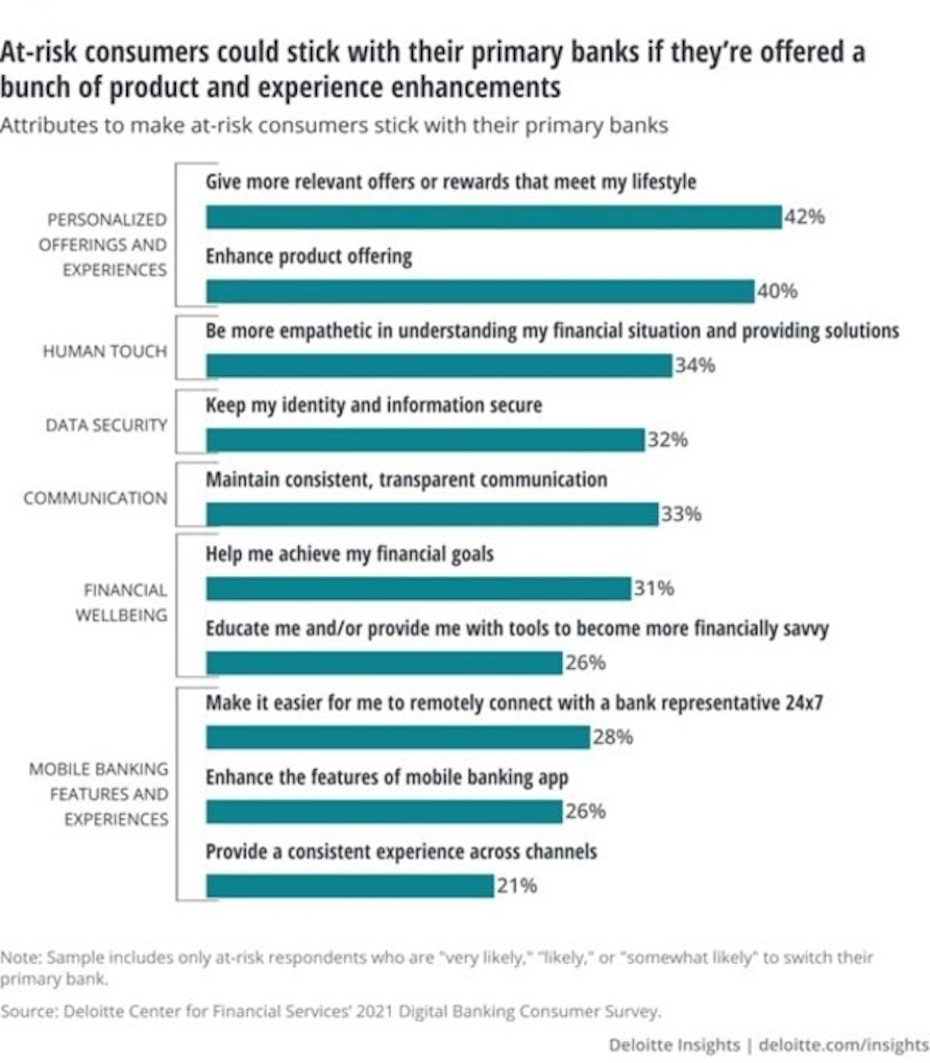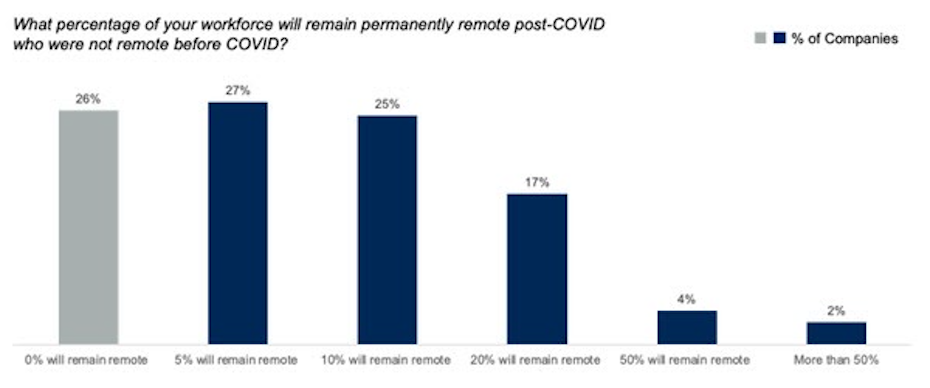Highlights:
- The financial services sector is accelerating the adoption of technology for digital engagement in response to customer and market demands.
- The rise of fintech plays a significant role in current financial services trends.
- Banks concerned with providing a better customer experience are using digital technologies to differentiate themselves from competitors.
👀 Did you know that cloud adoption is growing within the financial services sector? Grab our eBook to get the whole story.
The financial services sector continues to innovate and participate in the digital technology race. Customers expect high-level personalization in a fast-paced digital landscape. The workforce is also changing, as are the factors that contribute to employee success.
Predictions for the financial services sector in 2022
The following is an in-depth look at five critical predictions for the financial services sector in 2022 and their implications for your financial services organization.
1. Fintech partnerships for expanded services
The evolution of technology has fueled a number of third-party or ancillary services in the financial sector. Payment processors have become a popular means to quickly send money to friends and family or to pay small-business operators. Some exist within the structure of a bank, enabling users to transfer money to other people instantly. Virtual wallets are another popular support service.
Banks are increasingly turning to fintech to provide the additional services needed to attract and retain customers and these services will continue to expand into 2022. Many consumers prefer the convenience of an all-in-one banking solution. Providers that integrate these in-demand fintech features have an advantage over those that do not.

2. Increased digital engagement
More virtual banks have emerged over the last few years, and the global pandemic has led more customers to explore these no-contact banking opportunities. Whether you operate a community or regional bank, a global bank, or virtual platform, customers want digital access.
Deloitte noted that even with increased digital engagement, consumers still want bank branches available for high-touch interactions. As 2022 progresses, banks will need to offer a balanced approach that incorporates both digital and physical engagement.

Customers also have greater expectations for access to multiple, integrated communications platforms for support. Messaging, self-service (AI), mobile self-service, web chat, social media, website, and email are among the most in-demand digital support channels.
The percentage of uses for each channel is changing as well. Here’s a look at the predicted change in usage by channel, courtesy of The Financial Brand.

3. Data-driven hyperpersonalization
Research from Deloitte revealed that personalization tops the charts for helping banks retain customers at risk of attrition. Hyperpersonalization is now expected of financial institutions trying to remain competitive.

According to Deloitte, hyperpersonalization is defined as “using real-time data to generate insights by using behavioral science and data science to deliver services, products, and pricing that are context-specific and relevant to customers’ manifest and latent needs (i.e. those needs which, due to a lack of information or availability of a product or service, cannot be satisfied).”
Data and analytics enable financial institutions to deliver the type of personalized customer experience necessary to attract and retain customers in 2022. New fintech providers leverage proprietary data assets to give customers features and options they often cannot get elsewhere.
To compete, traditional banks will need to personalize their platforms and offerings to each customer in a way that is automated and efficient. User and behavioral data helps banks learn about the banking features that matter most to customers. Targeted access and offers prevent cluttered communication and account dashboards.
Users are more likely to pay attention to a bank’s communication and develop trust if the bank’s recommendations fit their particular interests.
4. Enhanced security features
The trade-off for more advanced technology and digital engagement is increased exposure to hackers and thieves. To counter this challenge, financial service providers need security features that keep up with the rest of their technology.
Identity verification will continue to evolve as a critical security concern in 2022. Financial services organizations need verification methods that are efficient and user-friendly, while protecting against fraud and theft. Biometrics, such as voice recognition and facial recognition, are becoming commonplace. When customers call, voice-recognition software is used by some providers to verify ahead of data-sharing. Mobile users can allow the use of face recognition for easier and faster logins on a device.
Domestic and international regulations have also beefed up requirements for banks to verify users and to detect possible instances of fraud. Customers are asked to submit bank statements, identification photos, and other documentation to confirm their identity and right to use external accounts. Providers need a safe and secure portal through which these types of documents are uploaded, as well as a system for efficient review.
Third-party partners and service providers must also deliver safe and secure connections. Banking customers need confidence in accessing any feature or tool related to their experience with their financial service providers.

5. Changing employee skillsets
The workforce became much more mobile during the pandemic. Banks had to adapt by implementing greater technological mobility. Remote workers create cost advantages for companies, and a lot of financial services providers will continue to operate with a more mobile workforce in 2022 and beyond. A recent Gartner survey showed 74 percent of financial officers plan to keep at least 5 percent of their transitioned workers in remote roles. Twenty-five percent plan to keep at least 20 percent of their teams in new permanent remote positions.
In addition to adjustments to their technology infrastructure and access, financial services organizations need employees that can function effectively in the new workplace. This means more consideration of multi-platform communication skills, technical capabilities, and agility. The ability to attract a larger talent pool is a key benefit of offering remote-work options.

Source: Gartner
Stay on trend with RingCentral
These are some of the most critical trends and developments likely to influence the financial services sector in 2022. Given the pace at which competitors emerge and technology evolves, financial services organizations must adapt to changing marketplace demands or get left behind.
Unified communications for a mobile financial services contact center is central to meeting the digital demands of the marketplace. RingCentral provides a unified communications platform and contact center solutions for the financial services sector. See how it works today.
Originally published Jan 20, 2022, updated Mar 30, 2022





